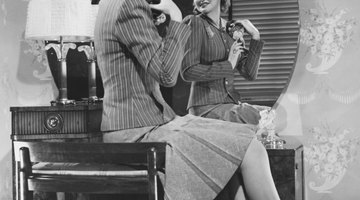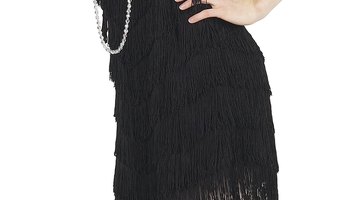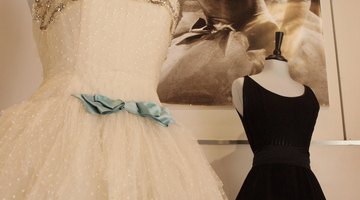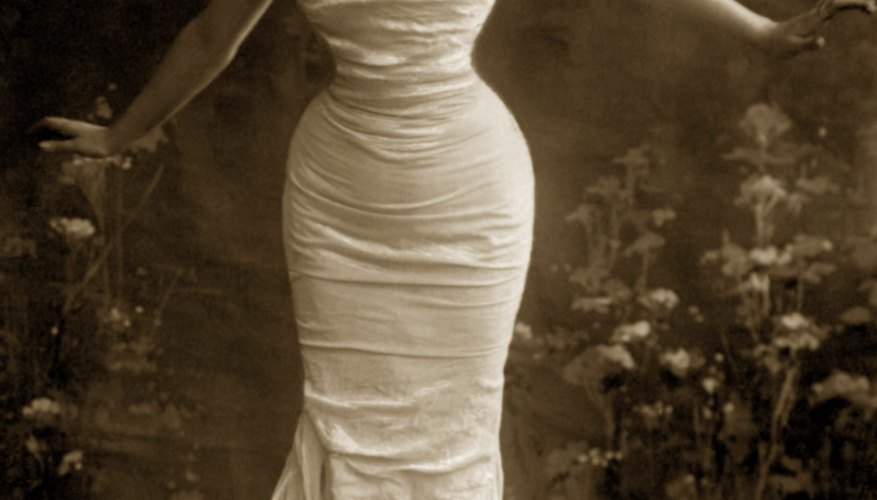Throughout history, fashion movements come and go, often resurfacing in a different decade. Cultural changes in society normally influence a corresponding change in clothes and hairstyles, many inspired by the latest celebrity or new designers. Wars, films, sport and worldwide travel all contribute to new fashion movements, while popular music and youth cultures often influence each the latest generation to adopt a new style.
History

Two world wars influenced a change in women’s fashions, encouraging females to adopt shorter skirts and more practical clothes. In 1947, designer Christian Dior introduced his New Look fashion, with full skirts and nipped-in waists to create an hourglass figure. Although using a scandalous volume of fabric, this more feminine fashion became popular as a measure of the new sense of hope and security. The Victoria and Albert Museum suggests it also encouraged women to give up their paid jobs after World War II and return to the home.
- Two world wars influenced a change in women’s fashions, encouraging females to adopt shorter skirts and more practical clothes.
- In 1947, designer Christian Dior introduced his New Look fashion, with full skirts and nipped-in waists to create an hourglass figure.
Sport
From playing tennis to the innovation of the bicycle, fashion movements adapted to accommodate the rise in sports activity among women. By the early 1900s, the bloomer suit, Amelia Bloomer’s early attempt at persuading women to wear trousers, was becoming more acceptable for use during sports. According to BBC News - Fashion, “the bloomer suit went on to change what women wore forever.”
Foreign influences

As travel became more popular and affordable, fashion in foreign countries affected new ideas and designs. In the early 1900s, designer Paul Poiret brought the influence of the Middle East and India to his new couture, displaying some of his designs at a fancy dress ball in 1911. Mariano Fortuny used the classical world and Renaissance sources as his inspiration. According to the Victorian and Albert Museum, both Chinese and Russian details such as embroidery and beads influenced British evening fashion of the 1920s.
- As travel became more popular and affordable, fashion in foreign countries affected new ideas and designs.
- In the early 1900s, designer Paul Poiret brought the influence of the Middle East and India to his new couture, displaying some of his designs at a fancy dress ball in 1911.
Popular culture

Fashion movements and beauty products are a measure of women’s changing role in society and Decades of Beauty suggests skirt lengths may alter according to the economic climate. The popular culture of a particular decade’s music, art and technology can have great influence on clothes, hair and make-up, resulting in movements such as the punk fashion of the 1970s. Even couture is increasingly street-led, according to Decades of Beauty. The art world has influenced fashion movements, with art nouveau inspiring softer and lighter fashion designs and the S-shaped corset at the turn of the 19th century.
- Fashion movements and beauty products are a measure of women’s changing role in society and Decades of Beauty suggests skirt lengths may alter according to the economic climate.
- The art world has influenced fashion movements, with art nouveau inspiring softer and lighter fashion designs and the S-shaped corset at the turn of the 19th century.
In celluloid

Although film and television might not launch new fashion movements, they often have great influence on certain fashions being worn. Hollywood glamour and film stars such as Audrey Hepburn and Grace Kelly encouraged women to adopt the feminine dresses and voluminous skirts they wore on screen during the 1950s. Television brought real people into the home with famous fashion icons like Jackie Kennedy Onassis endorsing shift-style dresses and pill-box hats.
